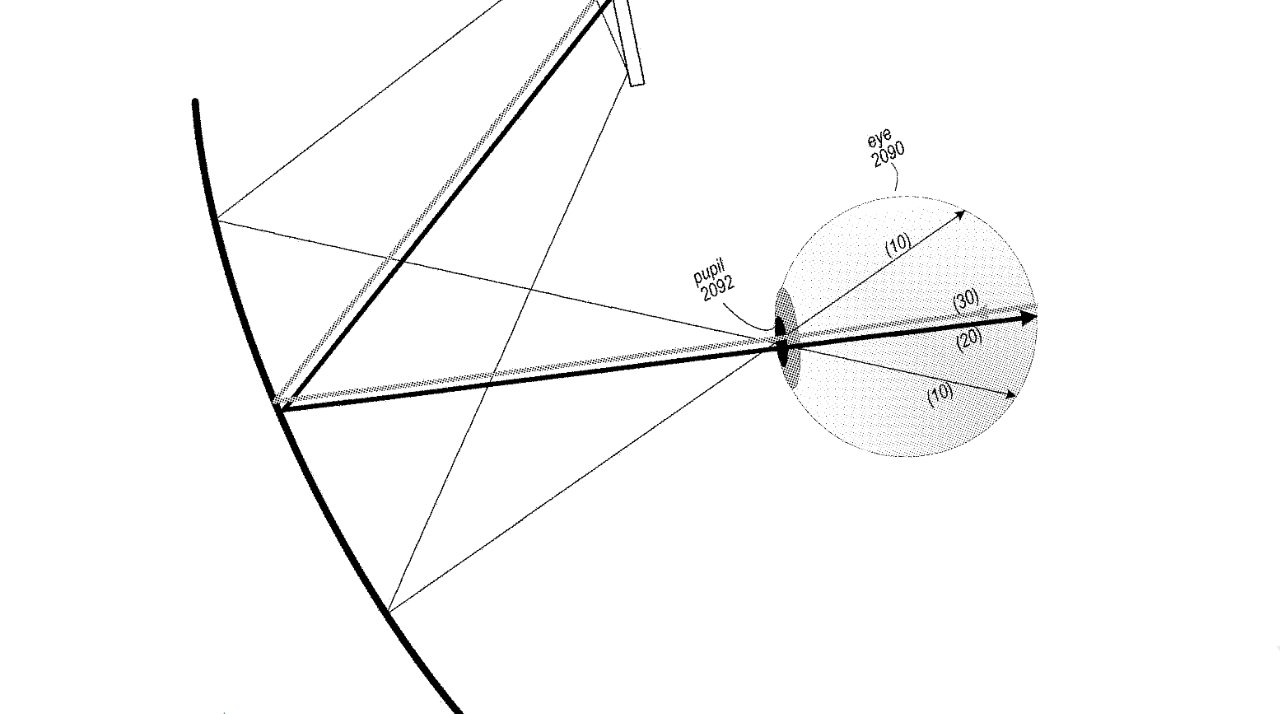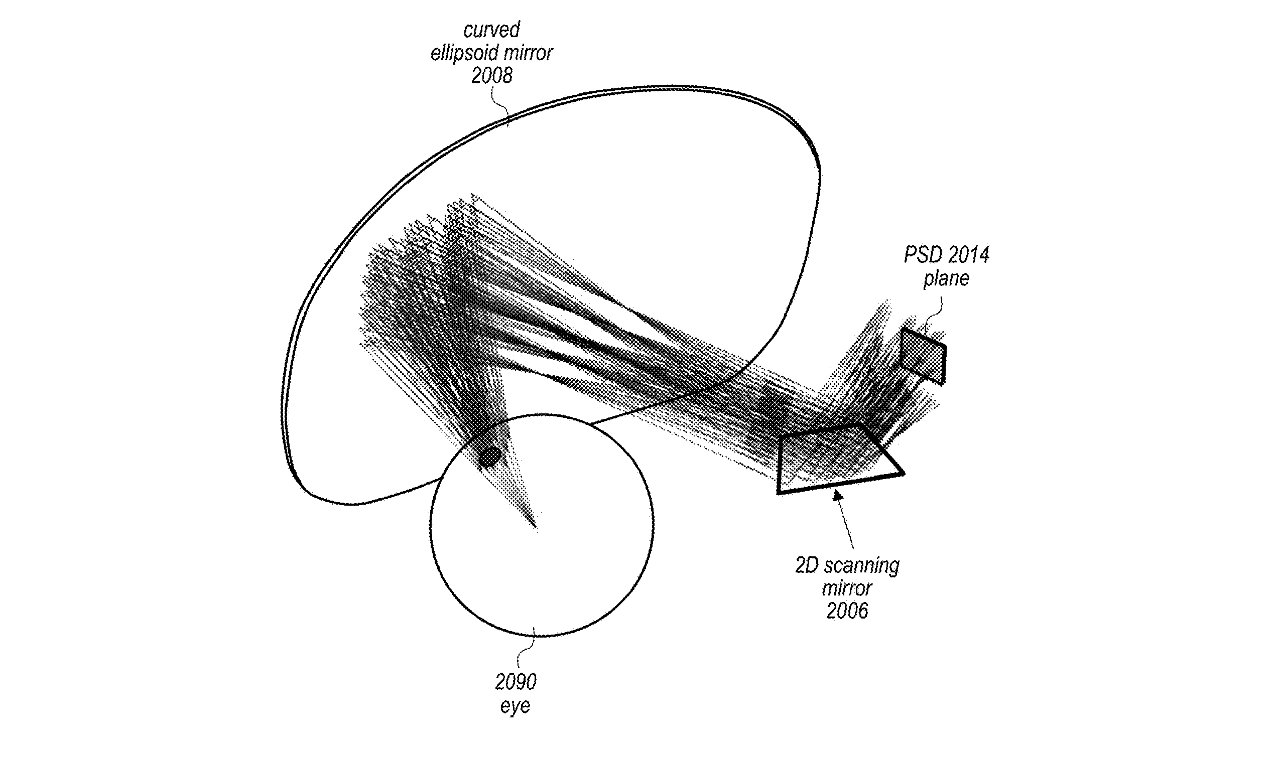'Apple Glass' could project AR directly onto a wearer's retina
Apple is researching how "Apple Glass," or other future Apple AR devices, could skip tiny screens altogether, and instead use micro projectors to beam the images straight onto the wearer's retina.

Future Apple AR or VR systems could project straight Into a user's eyes
Apple may soon have an entirely different meaning for its term "retina display." Rather than a screen whose resolution is so good our eyes can't distinguish individual pixels, there may not be a screen at all.
"Direct retinal projector," is a newly-granted patent, that claims this projecting right into the eyes could be best for AR. Specifically, it could prevent certain ways that watching AR or VR on a headset can cause headaches and sickness.
"Virtual reality (VR) allows users to experience and/or interact with an immersive artificial environment, such that the user feels as if they were physically in that environment," says the patent. "For example, virtual reality systems may display stereoscopic scenes to users in order to create an illusion of depth, and a computer may adjust the scene content in real-time to provide the illusion of the user moving within the scene."
We know all of this, but Apple wants to set the stage for how typical AR/VR systems work, and why there are problems. Then it wants to solve those problems.
"When the user views images through a virtual reality system, the user may thus feel as if they are moving within the scenes from a first-person point of view," it continues. "However, conventional virtual reality and augmented reality systems may suffer from accommodation-convergence mismatch problems that cause eyestrain, headaches, and/or nausea.:
"Accommodation-convergence mismatch arises when a VR or AR system effectively confuses the brain of a user," says Apple, "by generating scene content that does not match the depth expected by the brain based on the stereo convergence of the two eyes of the user."
You're wearing a headset and no matter how light Apple manages to make it, you're still conscious that you have a screen right in front of your face. Two screens, in fact, and right in front of your eyes.
So what you're watching, the AR or VR experience, might be showing you a panoramic virtual vista, perhaps with someone's avatar in the far distance, walking toward you. The AR/VR experience is telling your eyes to focus in that far distance, but what's being displayed is still actually, physically, exactly as close to your eyes as it ever was.
"For example, in a stereoscopic system the images displayed to the user may trick the eye(s) into focusing at a far distance while an image is physically being displayed at a closer distance," continues the patent. "In other words, the eyes may be attempting to focus on a different image plane or focal depth compared to the focal depth of the projected image, thereby leading to eyestrain and/or increasing mental stress."
Beyond the fact that this is obviously, as the patent says, "undesirable," there is a further issue. Today it's still the case that there is a limit to how long a user can comfortably wear an AR/VR headset.
Part of that is of course down to the size and weight of the headset, but it is also to do with these "accommodation-convergence mismatch problems." Apple says this can detract from a wearer's "endurance levels (i.e. tolerance) of virtual reality or augmented reality environments."

Detail from the patent showing one method of using mirrors to position AR projection
Projecting images into the wearer's eyes, by comparison, is a lot more like the way light usually comes into our vision as we look around. There have to be issues about the strength of projection, the brightness of the light source, but this patent doesn't cover those.
Rather, once it's made a case for using projection at all, the majority of the patent is spent on systems and methods for aiming correctly. The projection has to be precise, not just generally in shining into the eyes, but also what gets projected to which points.
Consequently, much of the patent about projecting into the eyes is also about what can be read back from those eyes. Specifically, Apple is once again investigating gaze tracking technology.
This new patent is credited to Richard J. Topliss; James H. Foster, and Alexander Shpunt. Topliss's previous work for Apple includes a patent for using AR to improve the Find My app.
Read on AppleInsider

Future Apple AR or VR systems could project straight Into a user's eyes
Apple may soon have an entirely different meaning for its term "retina display." Rather than a screen whose resolution is so good our eyes can't distinguish individual pixels, there may not be a screen at all.
"Direct retinal projector," is a newly-granted patent, that claims this projecting right into the eyes could be best for AR. Specifically, it could prevent certain ways that watching AR or VR on a headset can cause headaches and sickness.
"Virtual reality (VR) allows users to experience and/or interact with an immersive artificial environment, such that the user feels as if they were physically in that environment," says the patent. "For example, virtual reality systems may display stereoscopic scenes to users in order to create an illusion of depth, and a computer may adjust the scene content in real-time to provide the illusion of the user moving within the scene."
We know all of this, but Apple wants to set the stage for how typical AR/VR systems work, and why there are problems. Then it wants to solve those problems.
"When the user views images through a virtual reality system, the user may thus feel as if they are moving within the scenes from a first-person point of view," it continues. "However, conventional virtual reality and augmented reality systems may suffer from accommodation-convergence mismatch problems that cause eyestrain, headaches, and/or nausea.:
"Accommodation-convergence mismatch arises when a VR or AR system effectively confuses the brain of a user," says Apple, "by generating scene content that does not match the depth expected by the brain based on the stereo convergence of the two eyes of the user."
You're wearing a headset and no matter how light Apple manages to make it, you're still conscious that you have a screen right in front of your face. Two screens, in fact, and right in front of your eyes.
So what you're watching, the AR or VR experience, might be showing you a panoramic virtual vista, perhaps with someone's avatar in the far distance, walking toward you. The AR/VR experience is telling your eyes to focus in that far distance, but what's being displayed is still actually, physically, exactly as close to your eyes as it ever was.
"For example, in a stereoscopic system the images displayed to the user may trick the eye(s) into focusing at a far distance while an image is physically being displayed at a closer distance," continues the patent. "In other words, the eyes may be attempting to focus on a different image plane or focal depth compared to the focal depth of the projected image, thereby leading to eyestrain and/or increasing mental stress."
Beyond the fact that this is obviously, as the patent says, "undesirable," there is a further issue. Today it's still the case that there is a limit to how long a user can comfortably wear an AR/VR headset.
Part of that is of course down to the size and weight of the headset, but it is also to do with these "accommodation-convergence mismatch problems." Apple says this can detract from a wearer's "endurance levels (i.e. tolerance) of virtual reality or augmented reality environments."

Detail from the patent showing one method of using mirrors to position AR projection
Projecting images into the wearer's eyes, by comparison, is a lot more like the way light usually comes into our vision as we look around. There have to be issues about the strength of projection, the brightness of the light source, but this patent doesn't cover those.
Rather, once it's made a case for using projection at all, the majority of the patent is spent on systems and methods for aiming correctly. The projection has to be precise, not just generally in shining into the eyes, but also what gets projected to which points.
Consequently, much of the patent about projecting into the eyes is also about what can be read back from those eyes. Specifically, Apple is once again investigating gaze tracking technology.
This new patent is credited to Richard J. Topliss; James H. Foster, and Alexander Shpunt. Topliss's previous work for Apple includes a patent for using AR to improve the Find My app.
Read on AppleInsider

Comments
https://bgr.com/tech/apple-vr-glasses-rumors-injury/
"According to a workplace Health and Safety report obtained by Gizmodo, Apple is working on some kind of eye-mounted system that involves using lasers. We only know this because in two instances, Apple employees were left injured after testing the prototype."
Direct projection into the eye will allow for higher quality images than projection onto lenses in front of the eyes but they will have to make the brightness levels safe.
—it seems as investigates the means to render the augmenting visual cues transparent to the brain—that is—deliver visual cues indistinguishable from the objective reality to the brain!
In AR, you Augment the “objective” reality with visual cues. However, the brain functions—in essence—as an anti-augmenting system by dismissing the vast majority of “reality”. Most find such statements counter-intuitive and ridiculous, which is a testament to how effective the brain is at generating the illusion we call reality 😳
If succeeds, the user experience will be trivial and unimpressive: zero fatigue, zero tolerance issues 🤭
Thus, the brain sees the augmenting visual cues as part of the objective reality—thereby providing extremely powerful tools to “the good guys” and equally scary scenarios in the hands of “the bad guys”. For example: a HUD you never interpret as a HUD, with data points in your field of view along traffic signs, trees, pedestrians. This will likely reduce risk of traffic accidents, as you no longer must alternate your focus between the HUD and the surroundings.
For the scary scenarios, have a look at the movie “Anon”, available at Netflix 😱
The visual system is able to shift focus plane by manipulating the curvature of the lens—independent of gaze/position of the eyes. The above next-generation HUD must dynamically adjust the augmenting visual cues to both gaze (trivial) and focus plane (non-trivial, to say the least 👀). Luckily, shifting focus plane is very slow 😉